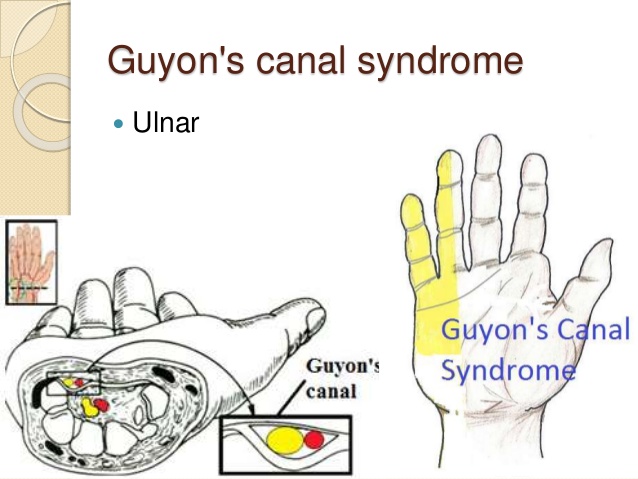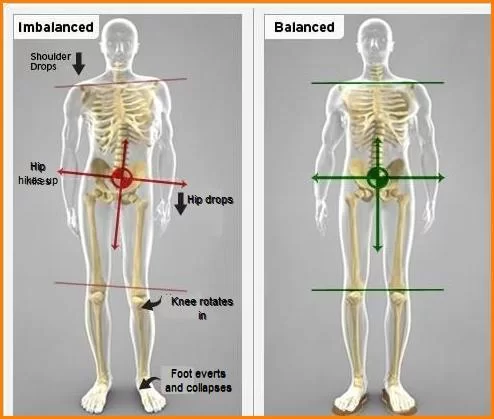Behavioural Therapy
Table of Contents
Introduction
A group of therapeutic approaches known as behaviour therapy attempts to replace unhealthy, self-defeating behaviours with constructive, adaptive ones.
Since behaviour is taught and the result of conditioning, behaviour therapy teaches the client positive behaviours that help them overcome maladaptive behaviours and accomplish their desired outcomes (Bambara & Knoster, 1998).
Phobias and compulsions are still treated with traditional behaviour therapy using methods of systematic desensitisation and extinction. Additionally, token economies are employed in therapeutic communities to encourage adaptive behaviours (Kazdin, 1982).
When adaptive behaviours result in the acquisition of privileges like special meals, more free time, or fun activities, tokens are awarded as rewards.
Examples of token economies encompass various forms of correctional facilities, residential communities for those with learning disabilities, and rehabilitation communities for individuals recuperating from substance misuse.
What is a Behavior Therapy?
These kinds of therapy for mental health conditions are referred to as behavioural therapy. It is predicated on the notion that all behaviour is learned and changeable.
This type of treatment seeks to pinpoint and assist in altering potentially harmful or self-destructive behaviors. Treatment plans frequently center on the problems of the present and how to solve them.
Behavioral treatment can be beneficial for a wide range of disorders.
When paired with other techniques, behaviour therapy has evolved and broadened over time to become a variety of psychological interventions. Some instances are:
Cognitive-behavioural therapy is the product of combining behavioural therapy and cognitive psychology.
CBT combined with mindfulness to create mindfulness-based cognitive therapy
Contextual behavioural science and mindfulness lead to the development of acceptance and commitment therapy.
Dialectical Behavior Therapy is the product of CBT, mindfulness, and humanism.
The purpose of all these interventions is the same: to change the client’s behaviour so that their behaviours are consistent with their intended life goals.
Behavioural therapy is most frequently sought after to treat:
- Depression
- Anxiety
- Panic attacks
- Anger-related disorders, such as intermittent explosive disorder
It can also aid in the treatment of illnesses and ailments like:
- Problems with eating
- Trauma-related stress disorder
- Manic episodes
- ADHD stands for attention deficit hyperactivity disorder.
- Fears, which encompass social phobias
- Compulsive-obsessive behaviour
- Self-destructive habits, such as cutting
- Substance use disorder
- Both adults and children can benefit from this kind of therapy.
Various forms of behavioral therapy:
There are many different types of behavioural therapy. They are:
- Behavioural cognitive therapy:
- Cognitive Behavioural Play Therapy:
History of Behaviour Therapy:
Behaviour therapy was recognized as an effective way to treat a variety of mental health conditions in the 1950s and 60s. Early in the 20th century, it was initially created. It was derived from behaviourism, which was formed by studying the relationship between stimulus, response, and reinforcement as the cornerstone of learning (McKenna, 1995).
Even though he is credited with founding behaviourism, John B. Watson (1927–1960) used Ivan Pavlov’s research to expand on his views.
In his research on canine digestion, Pavlov discovered correlations between a stimulus (food) that elicited salivation, a digestive response, and a stimulus (bell), which elicited no reaction. Because they now connected the bell to food, dogs started to drool at the sound of it even when there was none. Pavlov referred to this type of learned behaviour as “classical conditioning”.
Watson cited Pavlov’s theory of classical conditioning to highlight the idea that all behaviours are the result of learning. He researched the origins of phobias using Albert, a young child. When Watson continuously paired the rat with a loud noise, Albert began to develop a fear of rats even though he was initially not afraid of them. His nervousness diminished when the trial was put on hold for a month (Watson, 1924/1997).
Next, operant conditioning—the theory that the frequency of a behaviour depends on the subsequent events that occur after the behaviour—was discovered by B. F. Skinner in 1963.
When a behaviour is rewarded, for example, it is positively reinforced and more likely to be repeated. Conversely, if the behaviour is ignored, it will be eliminated.
Dollard and Miller contributed to behavioural theory by identifying four components of behaviour: drive, cue, response, and reinforcement (Metzner, 1963). Joseph Wolpe also discovered a phenomenon called reciprocal inhibition, which states that triggering a new reaction might diminish the intensity of a concurrent response. This led him to develop systematic desensitization as a phobia therapy technique (Metzner, 1963).
Last but not least, Bandura combined the concepts of operant and classical conditioning to create social learning theory in 1977. Bandura discovered that people learn by seeing or copying the behaviours of others. All of these behaviourist ideas have influenced the development of behaviour therapy.
Types of Behavioral Therapy:
Behavioural treatment comes in many different kinds of forms. Various factors, such as the ailment being treated and the intensity of the patient’s symptoms, can influence the sort of therapy that is employed.
Operant conditioning is a tool used in applied behaviour analysis to mould and alter troublesome behaviours.
- Cognitive behavioural therapy (CBT): While behavioural strategies are the foundation of cognitive behavioural therapy (CBT), CBT also includes a cognitive component, emphasizing the problematic concepts that underlie behaviours.
- Cognitive behavioural therapy is widely utilized. It blends cognitive therapy, which concentrates on thought patterns, with behavioral therapy, which primarily focuses on patterns of behavior.
- The focus of treatment is on how your ideas and beliefs affect your behavior and emotional state. It frequently concentrates on your present issues and how to resolve them. Developing thought and behaviour patterns that improve your quality of life is the ultimate objective.
- Cognitive behavioural play therapy: Play is used in cognitive behavioural play therapy to diagnose, treat, or prevent psychosocial problems. A youngster may be taught new ways to think and behave by the therapist through play.
- By observing them play, a therapist might learn about a child’s inability or discomfort in expressing themselves.
- Kids could be allowed to select their own toys and play unrestrictedly. They might be instructed to sketch a picture or construct scenes in a sandbox using toys. Parents can learn from therapists how to use play to enhance communication between them and their kids.
- By working with the child and the caregivers to teach the kid coping skills and goal-setting techniques, the therapist also adopts a more direct approach in this type of play therapy. The child’s play is not the only activity the therapist observes.
- Borderline personality disorder (BPD) is an emotional regulation disease characterized by suicidal behaviour, depression, unstable personal relationships, and other symptoms. Dr. Marsha Linehan developed DBT to help treat these symptoms.
- Dialectical Behavioral Therapy (DBT): It is a type of Cognitive Behavioral Therapy (CBT) that helps individuals learn how to control their emotions, deal with discomfort, and improve interpersonal relationships.
- Beyond BPD, DBT can be beneficial for other illnesses as well.
- DBT is made up of four components, or modules:
- Core mindfulness
- The application of interpersonal effectiveness to enhance one’s own and other people’s relationships
- Emotional regulation
- Distress tolerance
- In order to assist individuals live better, more fulfilling lives, DBT recipients are taught coping mechanisms and other skills.
- In exposure therapy, behavioural techniques are employed to help patients get over their fears of certain objects or circumstances. This method combines relaxation exercises with tactics that lead individuals to confront the origin of their concerns. It helps treat many anxiety disorders as well as certain phobias.
- Rational emotive behaviour therapy (REBT): The goal of rational emotive behaviour therapy, or REBT, is to recognize harmful or unpleasant ideas and emotions. After that, people actively contest those ideas and swap them out for more sensible, grounded ideas.
- Acceptance and commitment therapy(ACT): A mental health professional may conduct behavioral analysis as part of an ACT session. Although ACT and CBT are occasionally contrasted, ACT has a different approach. Relational frame theory, which emphasizes mental processes and human language, is the foundation of ACT.
- People learn acceptance techniques and mindfulness techniques in ACT to become more psychologically flexible. Methods for changing behavior and commitment are also employed.
- The fundamental idea of social learning theory is that people learn primarily via observation. Observing others get rewarded or punished for their actions can lead to learning and behaviour modification.
What Are Techniques in Behavioural Therapy?
Learning more about the fundamental ideas that underpin behavioural therapy is essential to comprehend how it functions. The theories of operant and classical conditioning serve as the foundation for the methods employed in this kind of therapy.
Classical Conditioning:
Creating associations between stimuli is the process of classical conditioning. Previous neutral stimuli are combined with a stimulus that inherently and spontaneously elicits a reaction. Following several pairings, a connection is created and the stimulus that was initially neutral starts to elicit the reaction on its own.
One method of changing behaviour is through classical conditioning. This therapeutic strategy makes use of a variety of methods and approaches.
- Aversion therapy: In aversion therapy, an unwanted behaviour is paired with an unpleasant stimulus in the hopes that the behaviour will gradually become less noticeable. Antabuse (disulfiram), for instance, is a medication that when coupled with alcohol can have severe side effects (such as headaches, nausea, anxiety, and vomiting) in those with alcohol use disorders.
- Treatment for diseases such as alcoholism and substance abuse disorders sometimes involves aversion therapy. It functions by teaching people to link an intensely uncomfortable sensation with a pleasurable stimulus that elicits a reaction but is unhealthy.
- It could be the unpleasant stimulation that is uncomfortable. For instance, a therapist can instruct you to link alcohol use to a bad experience.
- Flooding: This technique includes quickly and intensely exposing them to things or circumstances that make them feel afraid. Phobias are frequently treated with this method. The person cannot go away from the circumstance or escape it during the process.
- Systematic desensitisation:
- One technique that can assist you in becoming less sensitive to specific stimuli is called systematic desensitisation. It makes extensive use of classical conditioning, a kind of instinctive and unconscious learning that shapes behaviour. It’s frequently applied to the management of phobias.
- You learn breathing and relaxation methods as the first step in replacing your fear reactions with relaxation responses during treatment.
- Using this method, individuals write down their concerns and then practice being calm while focusing on them. Working their way up to the object that causes the greatest amount of anxiety, people work with a therapist to systematically face these fears. One common treatment for phobias and other anxiety problems is systematic desensitisation.
- Your therapist will utilize these tactics to help you face your fear or fears at gradually higher levels after you’ve mastered them.
Operant Conditioning
Operant conditioning is concerned with the use of rewards and penalties to modify behaviour so that it occurs more frequently or less frequently. When behaviour has positive outcomes, it becomes more likely to happen again; when it has bad consequences, it becomes less likely to happen again.
To change behaviour, behavioural therapy procedures employ modelling, shaping, reinforcement, and punishment. These techniques have the advantage of being extremely targeted, which enables them to provide outcomes quickly and successfully.
- Contingency management: This strategy makes use of a formal written contract that specifies behaviour-change objectives, reinforcements, rewards, and punishments between a client and a therapist (or parent or teacher). Since the terms are spelt out and prohibit both parties from backing down on their promises, contingency contracts can be quite effective in changing behaviour.
- Extinction: Refusing to reinforce behaviour to eradicate the reaction is another strategy for bringing about behavioral change. One excellent illustration of the extinction process is time-outs. A time-out involves removing a person from an environment that offers reinforcement. Unwanted behaviour eventually ends when what the person finds satisfying is taken away.
- Behaviour modelling: This method entails imitating other people’s actions and picking up lessons through observation. By witnessing someone else exhibit desired behaviours, modelling enables people to learn new abilities or acceptable behaviours without solely depending on rewards or penalties.
- Token economies: A strategy that uses reinforcement to change people’s actions. Token economies are a common tool used by parents and educators. They let children get tokens for good behaviour and lose tokens for bad behaviour. After that, these tokens can be exchanged for goodies like candies, games, or more time spent using a favourite gadget.
Advantages of Behavior Therapy
Behavioural therapy is a popular and successful treatment for a variety of illnesses. Cognitive behavioural therapy is sometimes seen as the “gold standard” in the treatment of numerous diseases, and cognitive behavioural play therapy, in particular, can be beneficial for kids in situations when other forms of therapy aren’t.
Results of CBT can often be observed after five to twenty sessions, and it is frequently less expensive than other forms of therapy. According to research, CBT works best when treating the following conditions:
- Anger issues
- Anxiety
- Bulimia
- Depression
- Somatic symptom disorder
- Stress
- Substance abuse and relapse prevention
Moreover, behavioural therapy has been demonstrated to benefit patients with the following conditions:
- Communication
- Coping strategies
- Healthier thought patterns
- Self-esteem
- Effectiveness
The effectiveness of behavioural therapy varies depending on the problem being treated and the particular treatment plan that is employed.
According to a study, over 67% of patients who attempt psychotherapy report feeling better overall.
This is not to say that the only forms of therapy that can be used to treat mental illness are CBT or other behavioural techniques. Furthermore, it does not imply that behaviour treatment is always the best option.
Behaviour-based therapies are frequently effective in treating anxiety disorders, such as panic disorder, obsessive-compulsive disorder (OCD), PTSD, panic disorder, and phobias. But depending on the substance being abused, researchers discovered that different behavioural therapies—specifically, cognitive behavioural therapy, or CBT—have different efficacies in treating substance use disorders.
Comparing CBT to other forms of treatment, it was also demonstrated to be helpful for some symptoms of schizophrenia, but not for relapse or hospitalization.
What is helpful With Behavioral Therapy?
Numerous psychiatric diseases and ailments can be treated using behavioural treatment, including:
- Bipolar disorder
- Alcohol and substance use disorders
- Anxiety
- Attention-deficit/hyperactivity disorder (ADHD)
- Autism spectrum disorders
- Borderline personality disorder (BPD)
- Depression
- Eating disorders
- Panic disorder
- Phobias
- Obsessive-compulsive disorder (OCD)
Behavioural therapy is action- and problem-focused. Because of this, it can also help treat particular psychological issues like stress and anger management.
Behaviour-based therapies often aim to provide outcomes in a very brief amount of time.
Does Behavioural therapy work well?
Behavioural treatment has proven to be a successful treatment for a wide range of disorders.It is thought to be fairly successful.
Approximately 75% of patients undergoing cognitive behavioural therapy report some degree of improvement.
A 2012 investigation according to a reliable source, cognitive behavioural therapy works best for treating:
- Anxious conditions
- General stress
- Insomnia
- Disorders linked to anger
- Somatoform illnesses, such as somatic symptom disorder, in which there is a physical basis for the physical symptoms reported but no underlying cause
- Depression
- Drug abuse disorders
Research has demonstrated the great efficacy of play therapy for kids between the ages of three and twelve. Nonetheless, patients of all ages are using this therapy more frequently.
Behavioural treatment for children:
Children can benefit from both play therapy and applied behavioral therapy. Teaching kids other ways to react to circumstances in a more positive way is part of the treatment.
Rewarding adaptive behaviours that enhance a child’s functioning and discouraging maladaptive behaviours, or those that obstruct a child’s optimal functioning, are essential components of this therapy.
It is common for this therapy to require the participation of several adults in the child’s life, such as parents, teachers, and other significant adults.
Children may need some time to develop trust in their counselor. It’s reasonable to expect this.
A youngster may become more receptive and capable of expressing themselves completely with enough time, patience, and attention to developing trust. The child’s age also has a big impact on this.
Behavior therapy is typically beneficial for children with autism who also have ADHD.
How to find a Behaviour specialist or counsellor?
Finding a therapist can sometimes feel daunting. Despite the abundance of tools accessible.
When looking for a mental health specialist or therapist, you have to see the following options:
- Social workers’
- Religious counselors
- Counselors who are not religious
- Mental health professionals
- Psychologists
Make sure the therapist you select has the required training and credentials. Some therapists focus on treating specific issues, such eating disorders or depression.
If you are unsure of where to begin in your search for a therapist, you can seek advice from a general practitioner, a medical professional who handles a wide variety of ailments. If it’s acceptable for you, your general practitioner might suggest seeing a psychiatrist.
If psychiatrists believe you might benefit from medication, they can write a prescription for it.
The majority of insurance policies will pay for counseling for mental health issues. Certain therapists provide sliding-scale payment choices or subsidies to people from low-income families.
A therapist will probe you extensively in order to precisely identify your issues and create a customized treatment plan.
When a person feels at ease discussing your issues with your therapist and starts to get the results you’ve been hoping for, you’ll know you’ve chosen the appropriate one. Before you locate the ideal therapist, you could need to see a few of them.
Summary
Even though behavioural therapy is frequently used to treat mental diseases, it is not necessary to have a mental health diagnosis to benefit from it. Regardless of the exact method, attending therapy sessions regularly can assist a person in seeing links between their thoughts, emotions, and actions.
From there, individuals can work on bad habits they’d like to break and learn effective coping mechanisms for handling challenging feelings. For people who have trouble accessing traditional, in-person mental health care, online cognitive behavioural therapy (CBT) may be useful. There are various methods of behavioural therapy also. They are used according to the patient’s requirements.
FAQs
Behaviorists employ techniques influenced by psychology to modify the actions of their clients. Their goal is to alter their first responses and coping techniques to elicit things, feelings, or occurrences. A lot of behaviour therapists focus specifically on managing stress levels to maintain physical and mental relaxation.
The American psychologist B.F. Skinner, who treated mentally ill patients in a Massachusetts state hospital, popularized behaviour therapy. Based on his research on animal learning, Skinner discovered that the way reinforcers, or rewards, are presented can influence the establishment and extinction (removal) of reactions.
The early proponents of behaviour therapy were Hans Eysenck and Joseph Wolpe. Generally speaking, behaviour therapy is thought to have originated in three different countries: the United States (Skinner), the United Kingdom (Rachman and Eysenck), and South Africa (Wolpe’s group).
CBT, or cognitive behavioural therapy, is a type of therapy that helps with a variety of disorders and is simple to incorporate into your daily life.
Concentrate Only on Your Thoughts.
Plan Your Day with Doable Assignments.
Methods of Relaxation.
Rethink the Way You Think.
Anxiety disorders: Panic disorder, social anxiety disorder, and generalized anxiety disorder can all be effectively treated with behavioural therapy.






